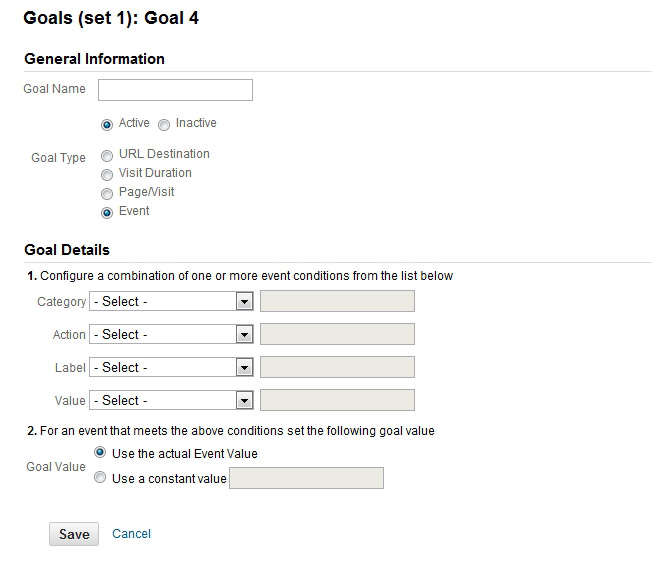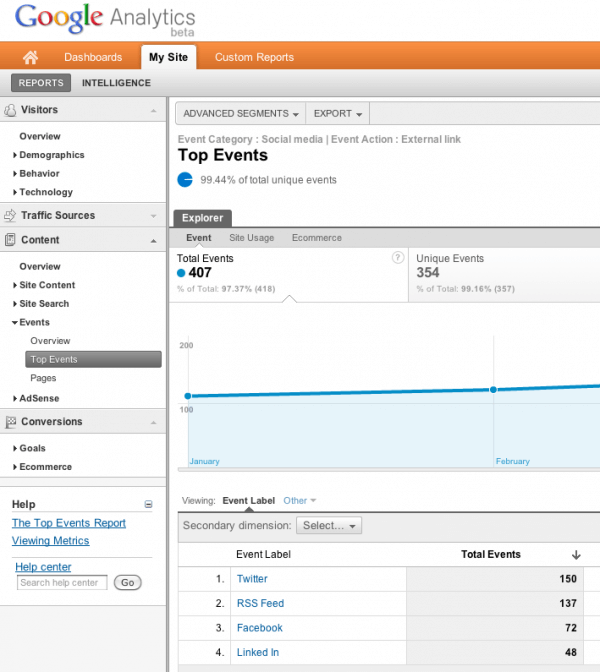Understanding What Data Is Google Analytics Goals Unable to Track
Understanding What Data Is Google Analytics Goals Unable to Track
Blog Article
Revealing the Blind Destinations: Understanding What Google Analytics Goals Can not Measure
In the world of electronic analytics, Google Analytics stands as an effective tool for tracking and analyzing on the internet customer communications. Amid its durable capacities, there exist blind areas that commonly evade dimension. what data is google analytics goals unable to track. Comprehending what Google Analytics objectives can not gauge is essential for acquiring a detailed view of user behavior and engagement. As we explore the intricacies of these unseen areas, we uncover a complicated web of uncharted areas that hold useful insights right into individual actions and inspirations, tough traditional wisdom and clarifying the constraints of our data-driven understanding.
User Behavior on External Operatings Systems
Comprehending how customers interact on external systems is critical for maximizing online strategies. External platforms, such as social media networks, referral web sites, and on the internet discussion forums, play a considerable function in driving web traffic to a firm's site. By examining customer behavior on these platforms, organizations can obtain beneficial insights right into the performance of their advertising and marketing efforts and the choices of their target market.
One key facet of customer actions on exterior platforms is the recommendation resource. By tracking where the users are originating from, businesses can determine which platforms are driving the most traffic to their web site. This info can aid firms allocate their resources better, focusing on the platforms that produce the most effective results.

Offline Conversions and Communications
Analyzing customer behavior on exterior platforms offers useful insights right into on-line methods; nevertheless, taking into consideration offline conversions and communications is similarly necessary for an extensive understanding of a company's general performance. Offline conversions, such as in-store acquisitions or phone inquiries, play a significant duty in several businesses' success.

Acknowledgment Beyond Last Click
When diving into the realm of digital marketing analytics, it comes to be necessary to look beyond the solitary touchpoint of the last click for an extra comprehensive understanding of attribution. While Google Analytics offers important understandings into customer actions, relying solely on last-click acknowledgment can be restricting - what data is google analytics goals unable to track. Attribution designs that exceed the last click provide a much more nuanced sight of the consumer journey, taking into consideration all the touchpoints that cause a conversion
Attribution beyond the last click enables marketers to assign credit history to numerous interactions along the conversion course, giving a clearer image of the effectiveness of different marketing channels. By exploring multi-touch attribution designs such as direct, time decay, or position-based attribution, services can better assign their advertising budget plans and optimize their methods for maximum impact.
Recognizing the influence of each touchpoint in the conversion process is essential for making informed decisions and optimizing ROI. By accepting attribution past the last click, businesses can gain much deeper insights into client behavior and customize their marketing efforts more effectively.
Cross-Device and Cross-Browser Tracking
Likewise, her comment is here cross-browser tracking complements cross-device tracking by recording user behavior as they switch over between various internet browsers. Understanding exactly how users interact with internet sites on different web browsers can aid marketers enhance their on-line experiences to ensure consistency and performance across various systems.
Qualitative Information and User Intent
Recognizing user intent via qualitative information analysis is essential for creating targeted digital marketing methods that reverberate with the needs and preferences of the target audience. Qualitative data provides understandings into the 'why' behind individual activities, clarifying motivations, feelings, and choices that measurable data alone can not catch. By evaluating customer comments, remarks, and communications, marketing visit their website experts can reveal useful information regarding customer intent, permitting them to customize their messaging, web content, and offerings to much better straighten with what their target market is seeking.
Qualitative information likewise assists in recognizing the context in which individuals involve with a site or app. This contextual understanding makes it possible for marketers to create even more personalized and pertinent experiences, eventually driving higher involvement and conversion rates. By delving into user intent with qualitative data analysis, businesses can obtain a deeper understanding of their target market, causing much more effective advertising and marketing techniques that satisfy customers' assumptions and needs.
Final Thought
To conclude, Google Analytics objectives have restrictions in determining customer habits on outside platforms, offline conversions, acknowledgment past last click, cross-device and cross-browser monitoring, and qualitative data associated with individual intent. what data is google analytics goals unable to track. It is essential for services to be familiar with these dead spots in order to supplement their data evaluation with other tools and techniques to acquire a much more thorough understanding directory of their target market and boost their total digital marketing strategies
By analyzing user habits on these systems, organizations can acquire important understandings into the effectiveness of their advertising initiatives and the choices of their target audience.
Examining individual actions on exterior platforms offers important insights right into on the internet strategies; however, thinking about offline conversions and interactions is similarly imperative for a thorough understanding of a firm's general efficiency.In digital advertising and marketing analytics, moving beyond last-click acknowledgment to discover cross-device and cross-browser monitoring is important for acquiring an all natural understanding of individual communications throughout numerous systems and tools. By assessing user responses, comments, and interactions, marketers can discover useful information about individual intent, enabling them to tailor their messaging, content, and offerings to better align with what their audience is seeking.
By diving right into individual intent through qualitative data analysis, companies can acquire a much deeper understanding of their target audience, leading to more effective advertising approaches that satisfy users' assumptions and requirements.
Report this page